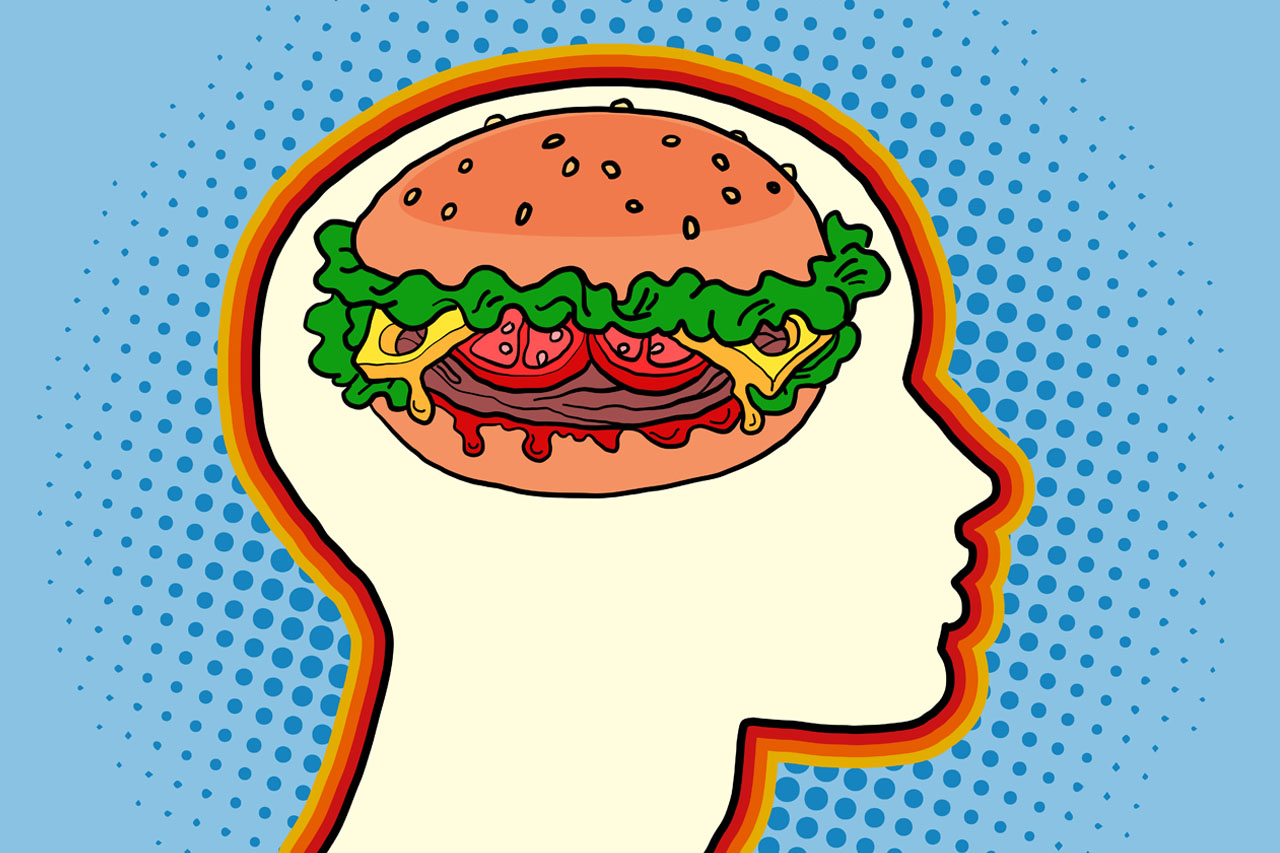Why Our Clinical Trial Combines Gastric Bypass with Truncal Vagotomy
For decades, type 2 diabetes mellitus (T2DM) has been seen mainly as a problem of sugar and insulin—a disease of the pancreas and the bloodstream. But what if the real story starts much earlier, deep inside the gut and its continuous conversation with the brain?
New research suggests that diabetes may be not only a “metabolic” disorder but also a neurohormonal communication failure—a breakdown in the way the gut, pancreas, liver, and brain talk to each other.
At diabetes.surgery, our team is exploring this idea through an innovative clinical study—the VagusSx Trial—which tests whether adding truncal vagotomy (surgical cutting of the vagus nerve) to Roux-en-Y gastric bypass can enhance diabetes remission.
To understand why, we must first look at how digestion itself can become “amplified” and how this affects the diabetic brain.
🌐 The Gut–Brain Axis: The Body’s Hidden Conversation Network
Your digestive system is more than a food-processing line—it is a sophisticated communication hub.
Every bite you take triggers a cascade of signals: taste and smell cues activate brain centers before the food even reaches your stomach. Then, as the meal enters your small intestine, thousands of specialized cells release hormones—such as cholecystokinin (CCK) and secretin—that tell the pancreas and gallbladder how much enzyme and bile to produce.
These messages travel through a powerful nerve called the vagus nerve, a two-way highway connecting the gut to the brainstem. It relays what’s happening in your intestines to the brain and sends commands back to regulate digestion, metabolism, and even mood.
In healthy conditions, this dialogue keeps blood sugar and appetite in balance. But under modern dietary stress—high-fat, high-sugar, fast-absorbing meals eaten too frequently—the system can go into overdrive.
⚠️ When Digestion Becomes Amplified
Normally, digestion is a tightly controlled, step-by-step process.
However, frequent exposure to rich, calorie-dense foods leads to amplified digestion—a state in which the gut’s enzymatic activity remains persistently elevated.
Here’s what happens:
- The duodenum (upper small intestine) releases excess CCK and secretin in response to fats and carbohydrates.
- These hormones strongly stimulate the pancreas and gallbladder to secrete digestive enzymes and bile acids.
- The vagus nerve—receiving constant stimulation—reinforces this output through parasympathetic activation, further driving enzyme release.
- Nutrient absorption becomes hyper-efficient: more glucose, fatty acids, and amino acids flood into the bloodstream than the body can safely handle.
The result is chronic nutrient overload, forcing the pancreas to produce extra insulin to keep glucose in check. Over time, cells become resistant to insulin’s signal—setting the stage for type 2 diabetes.
This is not just about eating too much—it’s about how the body processes food too efficiently under continuous neurohormonal stimulation.
🧩 The Brain’s Role: From Regulation to Reinforcement
Amplified digestion doesn’t stay confined to the gut. The constant stream of nutrient-related signals bombards the vagal centers in the brainstem. This triggers what our team calls the first “shot” in the diabetic brain: vagal overdrive.
In this state, the brainstem stops acting as a regulator and instead becomes a reinforcer of digestive activity—continuously stimulating pancreatic secretion and biliary flow even when unnecessary.
The brain’s higher centers respond next. The hypothalamus (the metabolic control hub) and the mesolimbic reward system (which drives cravings and pleasure) become desensitized to insulin and leptin—the hormones that normally signal “I’m full” or “I have enough energy.”
This desensitization leads to increased appetite, stronger cravings for calorie-dense foods, and less ability to feel satisfied after eating.
In other words, the body and brain can no longer regulate their internal balance. Digestion is turned up too high, hunger cues are distorted, and metabolism spirals out of sync.
🔄 The Vicious Loop of Amplified Digestion and Insulin Resistance
This maladaptive feedback cycle can be summarized as follows:
- High-fat, high-glycemic foods → overstimulate duodenal hormones (CCK, secretin).
- Vagal pathways amplify biliary and pancreatic secretion.
- Amplified digestion increases glucose, fat, and amino acid absorption.
- Chronic nutrient overload leads to sustained hyperinsulinemia and the development of insulin resistance.
- Over time, insulin and leptin resistance also emerge in the brain, increasing hunger and driving further food intake.
- This cycle repeats itself, progressively worsening metabolic control—independent of body weightEven lean individuals can develop T2DM through this mechanism, explaining why diabetes sometimes occurs without obesity and why metabolic surgery can induce remission before significant weight loss occurs.
🩺 Why the Vagus Nerve Is the Missing Piece
The vagus nerve acts as both messenger and motor in this loop.
When overstimulated, it keeps the digestive organs in a “switched-on” state—pumping out bile and enzymes long after they are needed. This continuous activation fuels amplified digestion and the metabolic stress that follows.
By carefully interrupting vagal signaling, we can quiet this overactivity, reduce excessive biliopancreatic secretion, and break the cycle at its source.
That’s where truncal vagotomy comes in.
✂️ Truncal Vagotomy: Turning Down the Volume of Digestion
Truncal vagotomy (TV) is a surgical technique that divides the main trunks of the vagus nerve as they reach the stomach. Historically, it was used to reduce acid secretion in peptic ulcer disease.
Today, it’s being re-examined for a different reason: its metabolic effects.
When performed alongside gastric bypass (RYGB), TV doesn’t just change anatomy—it changes physiology:
- 🔹 It reduces the parasympathetic drive that overstimulates the pancreas, liver, and gallbladder.
- 🔹 It blunts the hormonal overactivation of CCK and secretin during meals.
- 🔹 It redirects nutrient flow away from the duodenum, minimizing the early digestive “trigger zone.”
- 🔹 It enhances the release of GLP-1, PYY, and oxyntomodulin from the distal gut—hormones that promote satiety and improve glucose control.
The combined effect is a reset of the gut–brain axis: digestion slows to a healthy rhythm, nutrient absorption becomes moderated, and the hormonal environment shifts from pro-diabetic to anti-diabetic.
⚙️ Why Combine It with Gastric Bypass?
Roux-en-Y gastric bypass (RYGB) already improves T2DM by diverting nutrients away from the duodenum and stimulating beneficial distal hormones. However, it doesn’t directly address the neural overdrive caused by vagal overstimulation.
That’s where adding TV makes sense—it targets the neural root of amplified digestion, while RYGB handles the hormonal and absorptive components.
Together, they act on both sides of the gut–brain axis:
| Mechanism | Roux-en-Y Gastric Bypass | Truncal Vagotomy |
|---|---|---|
| Nutrient diversion from duodenum | ✅ | — |
| Reduced stimulation of CCK/secretin cells | ✅ | ✅ |
| Decreased vagal efferent activation | — | ✅ |
| Enhanced GLP-1/PYY secretion (ileal brake) | ✅ | ✅ |
| Improved insulin sensitivity | ✅ | ✅ |
| Reduced hyperinsulinemia | ✅ | ✅ |
This dual approach is the core of the VagusSx Clinical Trial, designed to test whether combining these interventions produces superior diabetes remission compared to RYGB alone.
📊 Evidence Supporting Vagal Modulation
Multiple studies have hinted at this connection:
- Gastrectomy data: Patients undergoing total gastrectomy (which includes vagotomy) show higher rates of diabetes remission than those with subtotal procedures, despite similar weight loss.
- Population studies: Individuals who had a vagotomy for ulcer disease later exhibited a lower risk of developing diabetes.
- Vagal nerve blockade (VBLOC) devices—using electrical modulation rather than surgery—improve glycemic control even without weight loss.
Together, these findings suggest that vagal tone—the level of neural activity along this pathway—plays a central role in metabolic regulation.
💡 The Neurohormonal Model: A New Way to Think About Diabetes
Traditional thinking treats T2DM as a result of insulin resistance in the muscles, liver, and fat.
The neurohormonal model reframes it as a gut–brain axis disease, in which the first dysfunction begins not in the pancreas, but in the proximal intestine and brainstem.
In this model:
- The duodenum acts as the ignition site, where amplified digestion begins.
- The vagus nerve acts as the accelerator, maintaining overdrive.
- The hypothalamus and reward system act as amplifiers, reinforcing overeating and reducing metabolic flexibility.
Therefore, intervening at the earliest link—the vagal-duodenal connection—may restore the entire system.
🧬 Beyond Surgery: Future Pathways
If the VagusSx Trial confirms that modulating vagal signaling enhances diabetes remission, this discovery could open the door to less invasive neuromodulatory therapies:
- Electrical vagal blockade or stimulation (already being tested in obesity).
- Targeted pharmacologic inhibitors of CCK or secretin release.
- Endoscopic or percutaneous interventions to modulate vagal tone.
Ultimately, the goal is to develop precision treatments that adjust gut–brain communication without the need for major surgery.
🌱 A New Philosophy: Treating the Cause, Not the Consequence
For decades, diabetes care has focused on controlling blood sugar—the symptom—rather than correcting its origin.
By recognizing T2DM as a disorder of amplified digestion and neurohormonal overstimulation, we shift the therapeutic target upstream, to where the disease truly begins.
The combination of truncal vagotomy and gastric bypass aims not merely to reduce weight or restrict intake, but to reprogram the internal signals that sustain diabetes.
This approach aligns with the growing realization that metabolic surgery works not through restriction or malabsorption alone, but by resetting the gut–brain dialogue that controls metabolism.
🩸 The VagusSx Trial: Testing the Hypothesis in Real Patients
Our ongoing randomized, triple-blind clinical trial at the University of Athens is the first to systematically evaluate this approach.
- Participants: Adults (18–65 years) with T2DM and BMI ≥ 30 kg/m²
- Design:
- Group A: Standard Roux-en-Y gastric bypass
- Group B: Roux-en-Y + Truncal vagotomy
- Endpoints: Diabetes remission at 12 months, changes in glucose, insulin, gut hormones (GLP-1, PYY, CCK), insulin sensitivity, and quality of life.
By comparing outcomes between the two groups, we aim to discover whether truncal vagotomy enhances metabolic improvement—and to confirm whether T2DM can truly be reversed by restoring neurohormonal balance.
🔍 What This Means for Patients and Physicians
For patients, the idea is empowering: diabetes may not be a life sentence but a reversible signaling disorder.
For clinicians, it offers a new framework—one that integrates surgery, endocrinology, and neuroscience into a unified model of care.
Instead of merely adjusting insulin doses, future therapy could aim to normalize digestive signaling, restore vagal balance, and revive natural satiety and glucose control.
💬 Final Thoughts
The story of diabetes is being rewritten—from a tale of sugar and weight to one of signals and systems.
Your brain and gut are in constant conversation. When that dialogue becomes distorted by modern diets and chronic overstimulation, the result is a cascade that leads to insulin resistance and β-cell fatigue.
But if we can restore that conversation—by recalibrating the vagus nerve and the duodenal response—we might not just manage diabetes; we could silence it at its source.
VagusSx: Where the conversation between gut and brain begins again.


